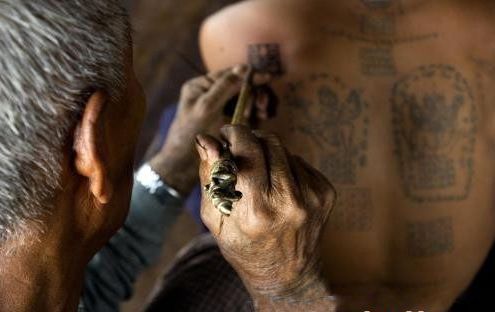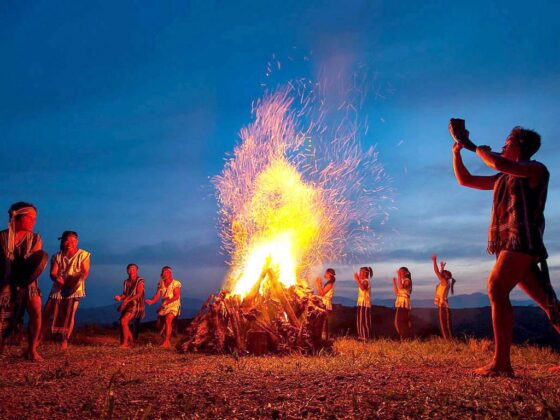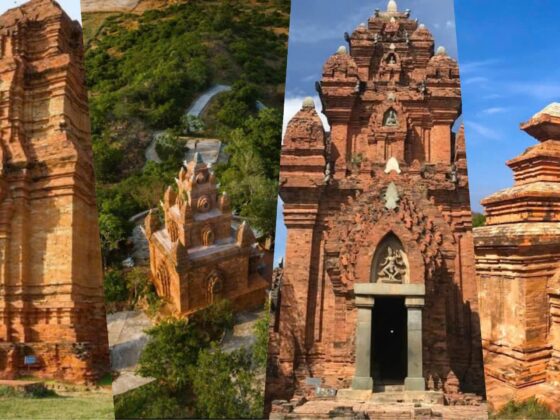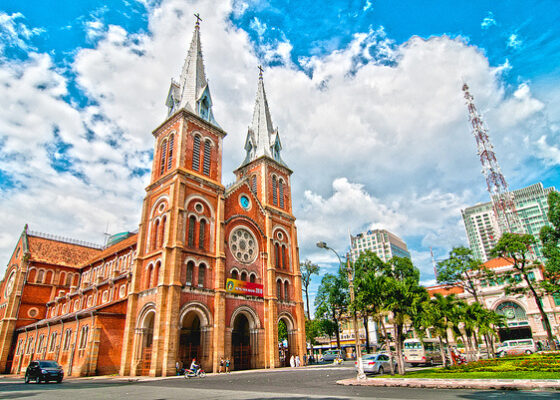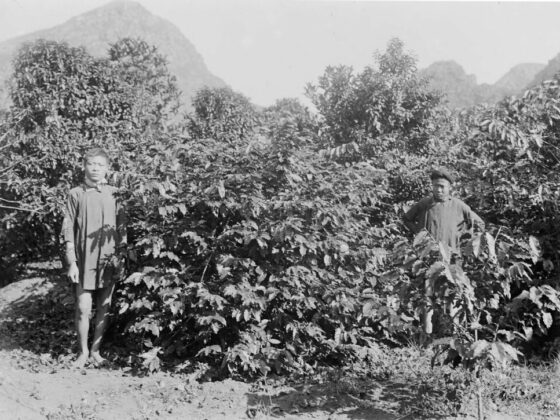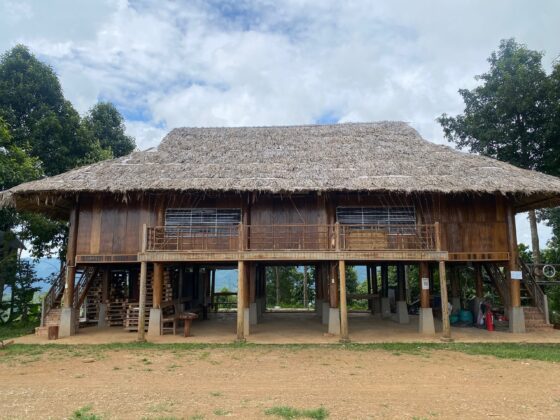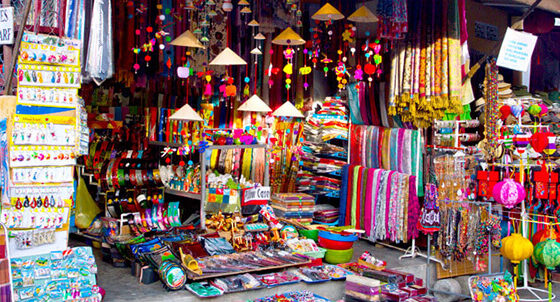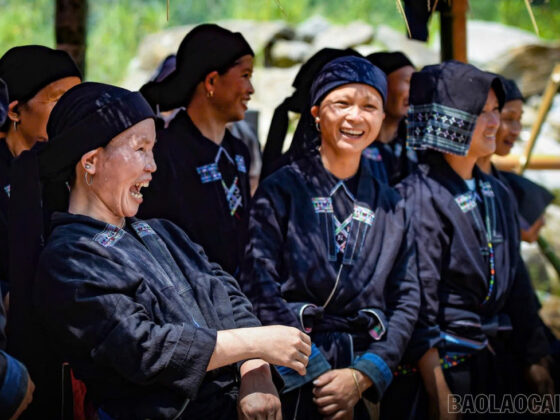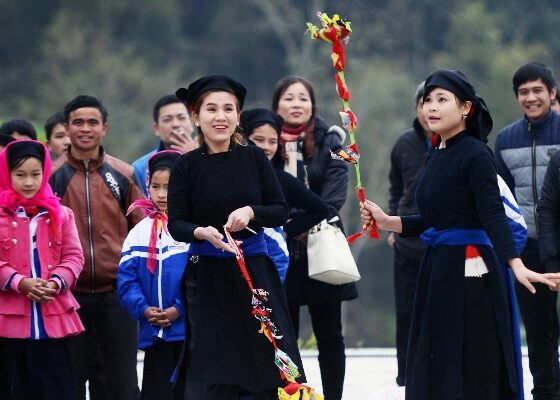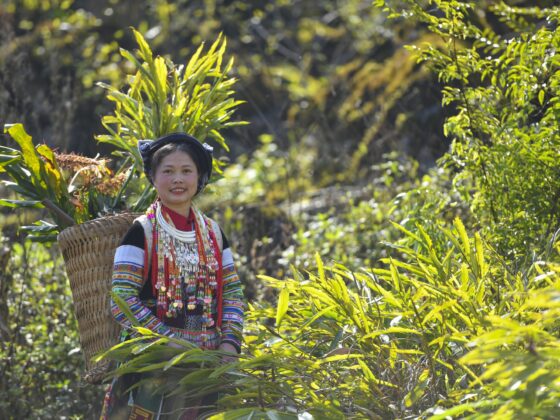Table of Contents Show
In the remote mountains of northern Vietnam, Vietnamese hill tribe tattoos reflect a deep spiritual and cultural legacy rather than mere decoration. Among certain ethnic groups most notably the Mang people of Lai Chau, traditional tattoos, especially the chin tattoos of women, mark an important rite of passage into adulthood and serve as symbols of protection and belonging.
These intricate patterns are part of sacred rituals led by village elders, believed to guide the soul safely to the ancestors after death. Though the practice has faded in many areas, the memory of these tattoos remains a living testament to the resilience and spiritual depth of Vietnam’s indigenous cultures.
Read more interesting posts:
- The Art of Vietnamese Pottery: A Timeless Tradition in Bat Trang Village
- The Ao Dai: A Timeless Symbol of Vietnamese Culture & Traditional Dress
- The Vietnamese Lotus Flower: Why It’s a Symbol of Purity
How Vietnamese hill tribe tattoos serve as a canvas of identity
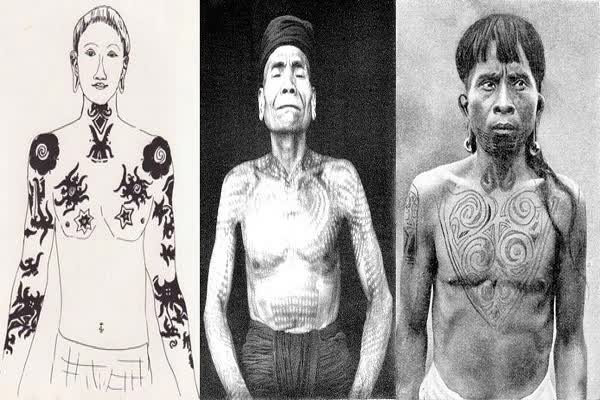
For many highland ethnic groups, tattoos are more than just body art; they are an expression of personal identity, spirituality, and the deep connection between the living and their ancestors. Among the Mang people of Vietnam’s northern highlands, Vietnamese hill tribe tattoos carry sacred meaning. Women traditionally receive chin tattoos in a ceremony that marks their passage into adulthood a sign of purity, maturity, and belonging within the community. It is believed that without these tattoos, their souls may not be recognized by their ancestors in the afterlife.
Other ethnic groups in the region also hold tattooing as a protective and spiritual act. These designs often include symbolic lines and geometric patterns meant to shield the wearer from evil spirits and misfortune. More than decoration, Vietnamese hill tribe tattoos are a form of spiritual armor, a physical manifestation of cultural memory, courage, and reverence for tradition that has endured across generations.
Exploring the deep symbolism behind Vietnamese hill tribe tattoos
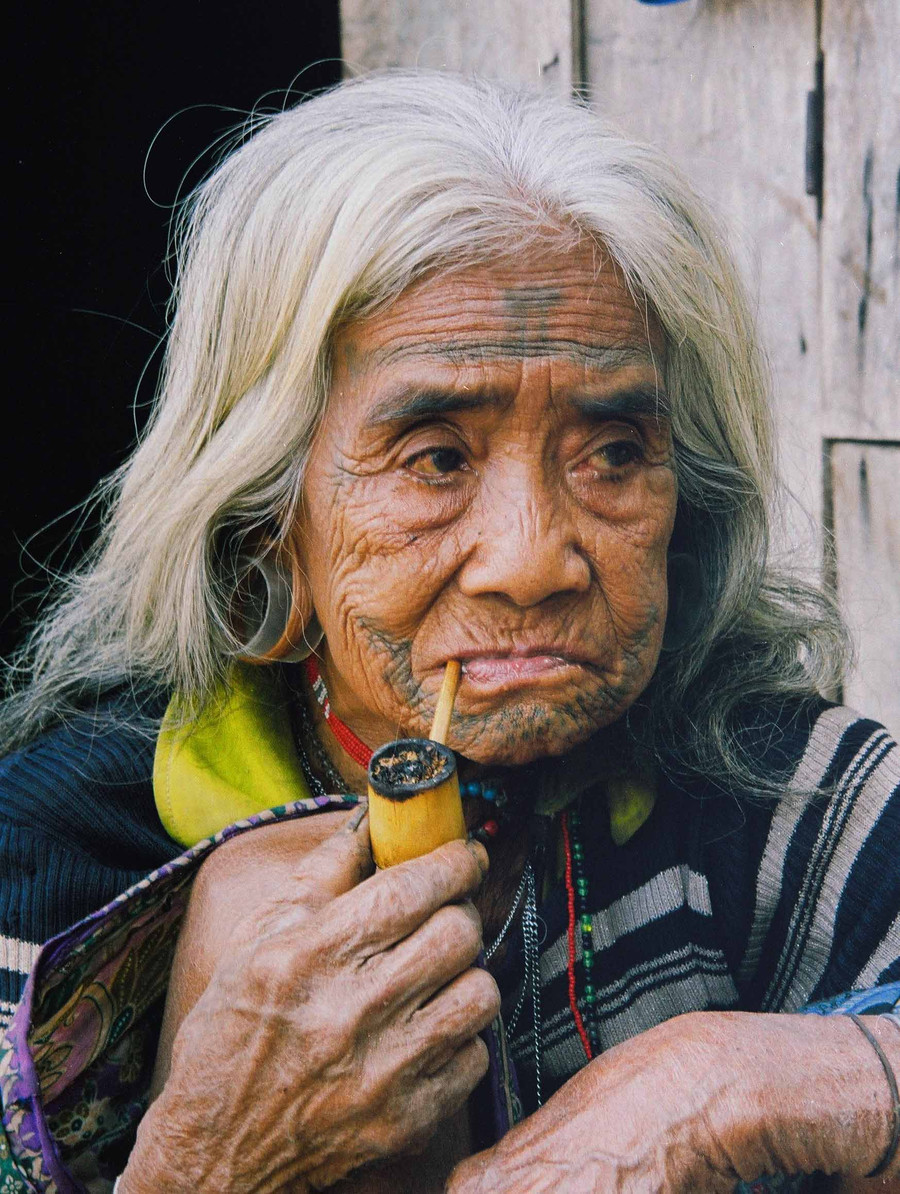
The designs of Vietnamese hill tribe tattoos are rich in cultural symbolism, each line and pattern carrying stories of ancestry, belief, and identity. Among the Mang people, the most distinctive form is the chin tattoo, a sacred mark that represents adulthood, virtue, and spiritual protection. The patterns are typically simple yet meaningful, formed by dots and geometric lines that are believed to connect the individual with their ancestors. These designs are not meant for decoration but serve as a bridge between the physical and spiritual worlds, expressing gratitude to the spirits and affirming one’s place within the community.
Across Vietnam’s northern highlands, variations of Vietnamese hill tribe tattoos share a common thread of reverence for nature and the unseen world. Each mark tells a story of belonging, endurance, and the enduring spirit of indigenous cultures that continue to honor their roots through ink and ritual.
The traditional art and ritual of creating Vietnamese hill tribe tattoos
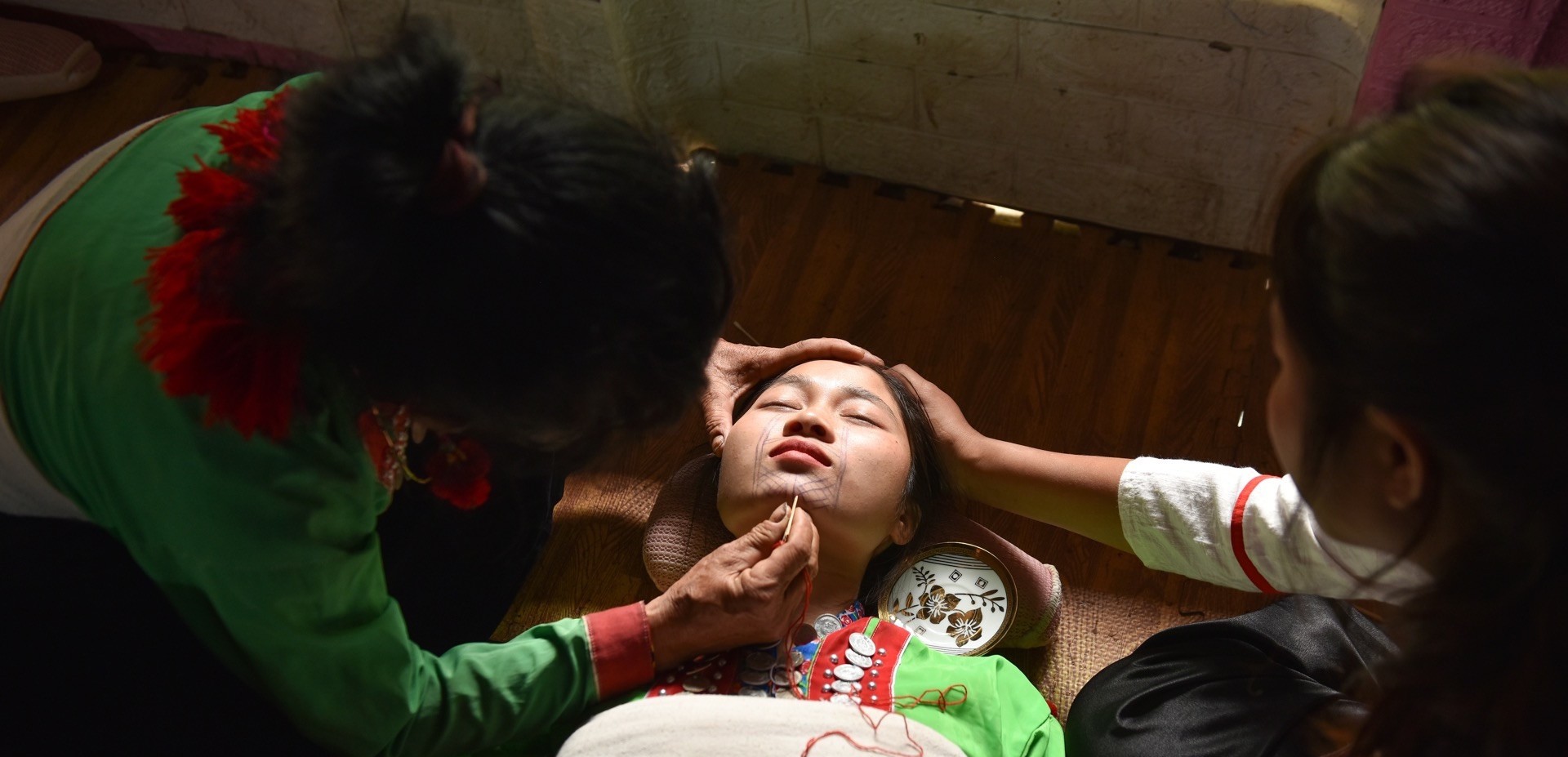
Traditionally, the process of tattooing among Vietnam’s highland communities is more than a physical act, it is a sacred ritual filled with ceremony and meaning. In the Mang culture, the tattooing is usually performed by a respected elder or spiritual practitioner chosen for their experience and purity. Before the tattooing begins, offerings such as rice, eggs, or poultry are made to the ancestors to seek protection and blessings. The tools are simple—small metal or bamboo needles and natural ink, yet the process is deeply spiritual and requires patience and endurance. This ritualized practice lies at the heart of Vietnamese hill tribe tattoos, where every mark carries the weight of ancestral faith.
The act of tattooing itself is a rite of passage. As the ink is applied, the participants and elders may recite chants or tell stories of the ancestors, weaving cultural knowledge into the ceremony. Through pain and storytelling, the ritual strengthens the connection between generations and reinforces the individual’s place within their community and their spiritual lineage.
The modern resurgence of Vietnamese hill tribe tattoos
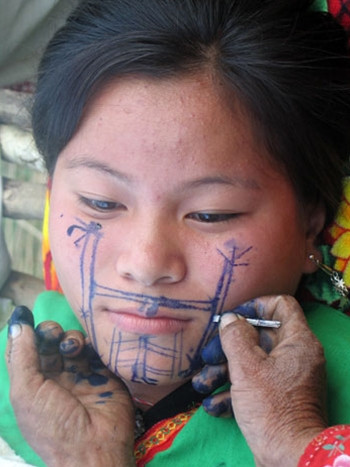
In recent decades, the practice of traditional tattooing among Vietnam’s hill tribes has gradually faded, surviving mainly in the memories of elders and the stories they tell. Among the Mang people, the once-sacred chin tattooing custom for women is now rarely performed, as younger generations move away from traditional rites and embrace modern lifestyles. Yet, even as the practice declines, the cultural meaning of Vietnamese hill tribe tattoos continues to hold deep value—serving as a reminder of ancestral faith, community identity, and the intimate bond between body and spirit.
Today, the preservation of this heritage relies largely on documentation, museum exhibitions, and cultural research. Visitors and cultural enthusiasts who learn about Vietnamese hill tribe tattoos often express admiration and respect for the spiritual depth behind this ancient art form. While the ink may fade from the skin, its stories endure—etched in memory as symbols of resilience and the enduring soul of Vietnam’s indigenous peoples.
Conclusion
In essence, Vietnamese hill tribe tattoos are far more than decoration; they are living chronicles etched onto the skin, visual stories of identity, spiritual protection, and rites of passage among ethnic groups such as the Hmong and Dao. Each tattoo serves as a sacred link connecting individuals with their ancestors, communities, and the natural world that sustains them.
Today, as younger generations rediscover and reimagine these traditions, this art form is not merely being preserved, it is being reborn. Through every revived motif and inked line, the spirit of Vietnam’s indigenous peoples continues to speak, testifying to their cultural resilience and enduring pride.
Want to dive deeper into Vietnam’s incredible cultures and breathtaking landscapes? Join our community of explorers in the ExoTrails Facebook Group and follow the ExoTrails Fanpage for daily inspiration and travel tips!
FAQs
What do Vietnamese hill tribe tattoos mean?
Vietnamese hill tribe tattoos carry deep meaning, symbolizing everything from personal identity and family lineage to social status and spiritual protection against evil spirits.
Do Hmong people have tattoos?
Yes, Hmong women traditionally receive intricate tattoos on their arms and legs, which serve as a beautiful and significant rite of passage into adulthood.
What is the significance of tattoos in Vietnamese culture?
Within specific hill tribes, tattoos are a crucial part of cultural heritage, marking important life stages and acting as a physical link to one’s ancestors and community.
What are traditional tattooing methods in Asia?
In these Vietnamese communities, the traditional method involves hand-poking with simple, natural tools, a ritual often performed by community elders who pass down stories during the process.

